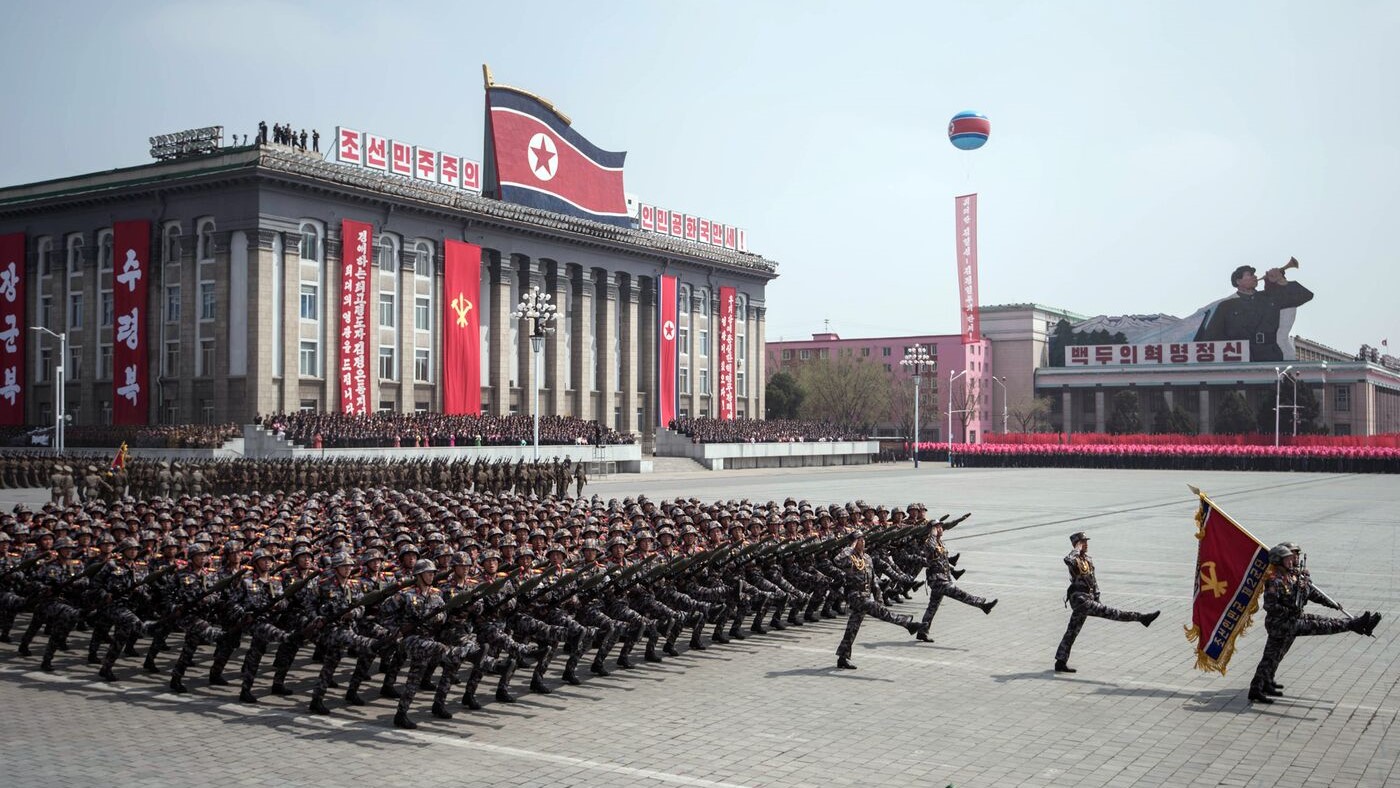top of page
Understanding The Conflict On The Korean Peninsula

THE HISTORICAL BACKGROUND AND GEOPOLITICS AROUND THE REGION
In 1910, Korea came under the control of the Japanese Empire after multiple conflicts and political manoeuvres and coercion, which is the source of today’s issues. Japan waged a massive cultural genocide against Korea in an attempt to erase its identity and maintain a political stronghold on the territory.
The Second World War devastated Korea, followed by decolonisation from the Japanese Empire. Under Kim II Sung’s leadership, the North Korean invaded South Korea on June 25, 1950. Around 75,000 men from the ‘North Korean People's Army’ crossed the 38th parallel, which divided the pro-Western Republic of Korea to the south and the Soviet-backed ‘Democratic People's Republic of Korea’ to the north, and resulted in the historic Korean War.
The invasion was the first military action during the Cold War. American forces had entered the conflict on South Korea's side by July of 1950. From the American perspective, the conflict was caused by the forces of global communism. The Cold War resulted in the temporary division of United Korea by the USA and the Soviet Union in their competition to occupy the erstwhile Empire of Japan.
The ideological divide between the Soviet Union and the USA made reunification of the Korean peninsula an uphill task. Instead, the division led to the outbreak of the Korean War between the two Koreas. The conflict was paused with the signing of the ‘Korean Armistice Agreement’ in 1953. On June 23, 1951, the ‘Soviet Union’—which supported DPRK—called for armistice negotiations since it saw no sign of improvement for the communist forces. The USA and the United Nations encouraged the talks between these countries, which took place in Kaesong on 10th July 1951.
North Korea pulled out of the talks in August 1951 owing to the South Korean ambitions of unifying the entire peninsula and its Prisoners Exchange Policy. Today, after more than 70 years, both nations still perceive each other as an existential threat. The pathway for reunification and denuclearisation of the Korean peninsula seems audaciously premature as both countries hold multiple political, economic, security-related, and social grudges against each other.
Unfortunately, the United Nations (UN) is also unable to resolve the conflict between ROK and DPRK due to multiple reasons. The Korean Peninsula is balanced by unavoidable roles played by regional and extra-regional powers. Since the division of Korea, the USA and Japan have been key allies of ROK, and DPRK is enjoying support from the Chinese and the Russians. In 2003, The Six-Party Talks, an attempt to build trust among all these players against the backdrop of North Korea’s nuclear reactors, failed when DPRK pulled out and revealed its huge storage of uranium.
North Korean efforts to build weapons of mass destruction are further escalating tensions in the peninsula. South Korea has deployed defensive infra, such as the Terminal High Altitude Area Defence System (THAAD) to maintain deterrence. US military presence and support to South Korea and Japan makes it difficult for the North to make it for any negotiation. Similarly, there are sanctions imposed by international organisations on DPRK for developing nuclear weapons. Chinese and Russian economic and military assistance to the North, and its stance against these sanctions makes the negotiation process more difficult. The 'Korean Peninsula' is a strategic shield of China against the USA.
The conflict is providing grounds for the USA and China to engage in an economic and ideological proxy war. The military, and economic dependency of the DPRK on China, as well as the economic and trade relationship of the ROK with China, are considerable variables for China to play a significant role.
CURRENT TENSIONS ON THE KOREAN PENINSULA
North and South Korea’s relations with each other had already been deteriorating since 2020 when North Korea blew up a joint liaison office with South Korea at the Kaesong Industrial Complex.
However, North Korea's recent actions, which include a military satellite launch, an intercontinental ballistic missile (ICBM) test, artillery fire along the Northern Limit Line (NLL), testing of another underwater nuclear drone, and the rejection of reunification with South Korea, have emerged as provocative factors in 2024, particularly as South Korea and the United States prepare for elections.
North Korean leader Kim Jong Un has decided to abandon his country's long-standing aim of achieving reunification with South Korea. In a speech to the Supreme People's Assembly on January 15, 2024, Kim urged constitutional reforms to designate South Korea as the ‘principal enemy’. North Korea would no longer consider the South a ‘partner of reconciliation and reunification’. The words followed Kim's remarks at an end-of-year speech to party officials, in which he blamed South Korea's cooperation with foreign powers and hostile stance toward Pyongyang for abandoning reunification efforts.
Though Kim’s regime did not perform as many ballistic missile tests as in the preceding months, it did launch five intercontinental ballistic missiles and dozens of other short and intermediate-range missiles throughout the calendar year; moreover, it enhanced its space and cyber capabilities.
This led to concern from South Korean officials regarding the satellite launched into orbit by the North Korean military for reconnaissance purposes on November 21st, which failed twice earlier that same month with alleged Russian assistance. Over the past year, trilateral cooperation between the US, Japan, and South Korea has been strengthened in response to North Korean missile, nuclear, and cyber threats.
In exchange for such actions, economically attractive short-range ballistic missiles were transferred to Russia by the DPRK provided that Moscow offered economic, scientific, humanitarian and military aid. Reports suggesting an increase in the number of trains and ships passing through ports along Russia’s border with North Korea indicate a surge in arms trade between the two nations. There is also fear among some South Koreans about deepening ties between Japan, the US and South Korea ending which could end up triggering an arms race across North East Asia.
In May 2024, the North launched about ten such similar projectiles which are believed to have short-range ballistic missiles near Pyongyang. South Korea reported that missiles reached about a range of 350 kilometres and landed in the waters off the East of Seoul. The region's security has increased surveillance while sharing intelligence with both the U.S. and Japan.
North Korea’s botched satellite launch was also a source of international criticism. Not only the United Nations but other regional players like Japan and China had strong reactions to the launch attempts, given the dual utility of these systems in the development of intercontinental ballistic missiles. In November 2023, the first military spy satellite of the North was successfully launched.
However, in March 2024, the failure of North Korea to launch the spy satellite increased the risk of launching three more military spy satellites by the end of 2024. On May 17th, South Korea’s military said that North Korea had fired suspected short-range ballistic missiles into the sea off its east coast, which was a test of ballistic missiles equipped with a new autonomous navigation system.
This year alone, Pyongyang experimented with a variety of cruise missiles, artillery systems, and a solid-fuel intermediate-range missile capable of achieving hypersonic speeds. These intermediate-range missiles could potentially reach as far as Guam among other distant US targets in the Pacific.
On 28th March, Pyongyang sent almost a thousand balloons filled with garbage to South Korea. It was a sort of protest by North Korea against anti-North propaganda in the South. The bags of garbage contained a variety of things including cardboard, plastic and cigarette ends.
According to the Joint Chiefs of Staff of South Korea, these balloons were sent in northern provinces like Seoul or Gyeonggi which account for about half of the South Korean population. This move comes after Kim was warned against testing his weapons before sending them over to Russia who would then use the armaments against Ukraine.
The Defence Minister of South Korea, Song Young-moo said that now North Korea has transferred 10,000 containers of arms to Moscow in exchange for satellite technology. Unless North Korea is rebuilt economically and diplomatically, it can never be put in a position to negotiate with South Korea over reunification talks in the future.
Furthermore, we should also realise that China’s involvement on issues related to DPRK is growing day by day and it is going to play an important role in any kind of negotiations aimed at resolving the Korean question. History has repeatedly shown us that complete trust or friendship between nations does not exist within international politics, thus implying that such close ties will require high diplomatic efforts and cooperation.
Both North and South should know better than anyone else about this fact of being sandwiched among giants like China and America so they must pursue more pragmatic diplomatic approaches if they want peace around the Korean Peninsula.
BY TEAM GEOSTRATA
bottom of page
.png)















